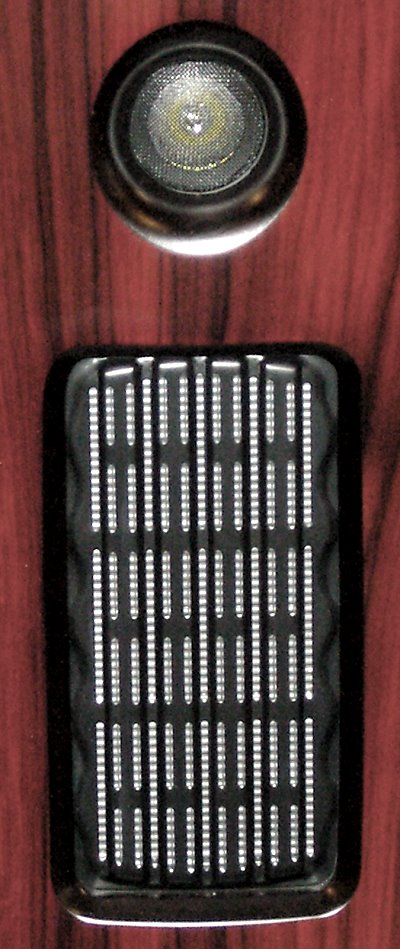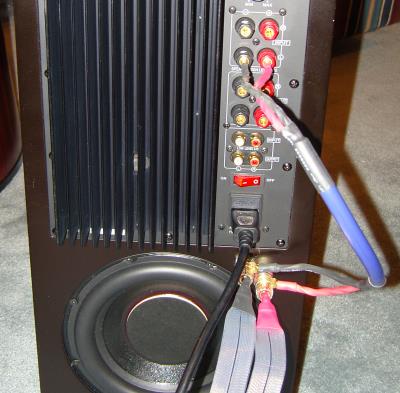|
||||||||
|
Introduction I don't know how to write an introduction to Mark Schifter's company called AV123 anymore. Everyone knows who he is, the kinds of products that AV123 markets, and that all of the products are very good, with a high performance to cost ratio. So, let's just get right into a description of his latest speaker, the Onix Strata Mini. The Design When I heard this speaker at the Rocky Mountain Audio Fest, I knew I had to get a pair right away. It wasn't that they just sounded great. It wasn't that they were only $1,595 for the pair. It was because they used planar-magnetic tweeters and midrange drivers. I am a huge fan of planar drivers, including ribbon, planar-magnetic (like Magnepan), and electrostatic. In fact, that is just about all I use in my various reference systems. For example, I have two pairs of the old Carver Amazings, which are quasi-ribbons, a pair of Magnepans, a pair of Threshold ES-500 electrostatic speakers, and Final Sound center and surround electrostatic speakers. Planar drivers have incredible detail because they are so light weight. Planar-magnetic drivers work by having a thin conductive membrane that carries the audio signal, suspended between strong magnets. When the audio signal passes through the conductive membrane, this sets up a magnetic field that is attracted or repelled by the permanent magnets. The membrane moves, creating the sound we hear. The downside of planar drivers is that they tend to need lots of amplifier power (low sensitivity), and because they are tall and thin, they don't have much vertical dispersion. The wide ones (full range electrostatics) don't have good lateral dispersion either. Anyway, I heard the Strata Minis at the Audio Fest, requested them, and received them a few weeks ago. While unpacking them (they are big, heavy speakers, and they come crated with wooden slats surrounding the cardboard shipping boxes, so it took me a long time), I thought, "This rosewood is beautiful. How the heck does Mark do this for $1,595/pair?" Now, I did not have much time to listen to them when I was at the Audio Fest, because we had a lot of rooms to visit at the show. Thus, I did not have all the details about this new product. So, I was shocked to find that they included a 350 watt powered 8" subwoofer on each speaker! I had wondered how the speaker was producing so much bass at the Audio Fest. I had only seen the drivers on the front. The powered subwoofer driver is on the rear. Maybe Mark did mention the powered sub, but I don't remember. That kind of thing happens at my age (61). Into the lab they went. The tweeter is 1" planar-magnetic in design, and the membrane is circular. For midrange, there is an 8" planar-magnetic. Between the two, the audio spectrum is covered from 35 kHz down to 650 Hz, with the crossover between the tweeter and midrange being at 4.4 kHz. Here is a close-up of the planar drivers. You can see that circular design in the tweeter.
A 5.25" cone mid/woofer delivers the mid/low frequencies, down to 80 Hz, which is low-passed to the powered 8" cone subwoofer. You don't have to use the power amplifier if you don't want, because the mid/woofer and subwoofer drivers are coupled. That is, they are in the same chamber, in which case the subwoofer acts as a passive radiator. However, you would be nuts to do this, because (1) you paid for the power amplifier, and (2) the powered subwoofer makes a huge difference. The backside of the Strata Mini is complicated, at least for a speaker.
At the top is the subwoofer power amplifier, with, from top to bottom, rotary controls for Crossover Frequency (30 Hz - 150 Hz), Phase (continuously adjustable from 00 - 1800), and Volume. Underneath the controls are speaker-level and line-level inputs and outputs. At the bottom are the On/Off power amplifier toggle, the grounded AC socket, and the main speaker binding posts. The subwoofer driver is there, with the slotted port. You can connect the speaker outputs to the main binding posts and a subwoofer line-level output to one of the line-level inputs on the Strata Mini if you like. However, each Strata Mini has a powered subwoofer, and most receivers and SSPs only have one subwoofer output. AV123
supplies the answer, in the form of a short speaker cable that has banana
plugs on one end and spade lugs on the other. What you do is connect the spade lugs to the main binding posts and the other end into either the right or left speaker-level inputs of the woofer's power amplifier. For this review, I used the left input. Then, you plug your speaker cable from your receiver into the main binding posts. Make sure the subwoofer power amplifier volume control is turned all the way down, then turn on the power amplifier using the toggle switch, and you are all set to go. Now, the beauty of this setup is that you can adjust the amount of bass depending on where the speaker is sitting in your room. That is not something you can do with a speaker whose low bass driver is not separately powered. I tested the Strata Minis several feet out from the walls, and ended up with the crossover set at 30 Hz, the phase set at 1800, and the volume control set at 2 o'clock (see On the Bench, in Part III.) I toed the speakers in at about 200, and put on some music. For the review, I used a McIntosh MCD201 SACD player, Mark Levinson No 326S preamplifier, and McIntosh MC1201 power amplifiers. Cables were Nordost.
|
||||||||







